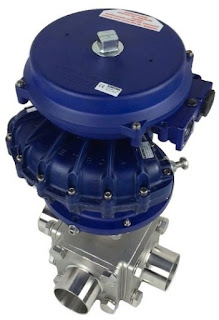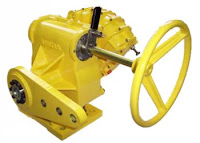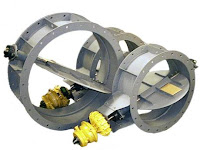 Kinetrol USA will exhibit it's pneumatic vane actuators for use in foodservice and beverage processing at Process Expo 2017.
Kinetrol USA will exhibit it's pneumatic vane actuators for use in foodservice and beverage processing at Process Expo 2017.
The exposition will be held on September 19–22, 2017 at McCormick Place in Chicago, IL.
Kinetrol's exhibit is located in the North Hall, booth #2670.
Kinetrol will be promoting it'd new "Blueline" actuator and accessories. The Blueline actuators are intended to be installed in areas where harsh chemical wash-down is required. These areas are very tough on most types of pneumatic actuators because the caustic or acidic chemicals used in cleaning adversely effect the actuator.
 |
| Blueline actuator. |
Food and beverage processors from small to large companies across the globe attend PROCESS EXPO in Chicago, USA. Attendees cover a range of food production and manufacturing responsibilities including CEO, owner, corporate management, sales and marketing, production, operations, sanitation, maintenance, research and development, quality assurance, engineering, chefs, contract manufacturers, and more.
The attendees also represent a cross section of vertical markets in addition to manufacturers outside the food industry that can benefit from the machines, products, and safety issues covered at PROCESS EXPO. The vertical markets include:
- Bakery, Grains, Seeds, and Snacks
- Beverage
- Dairy
- Meat, Poultry, Seafood
- Prepared Foods, Fruits, Vegetables
- Confectionery, Candy, Sweets
- Pet Foods







